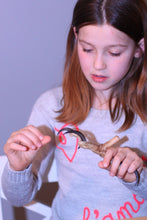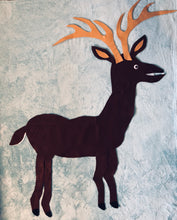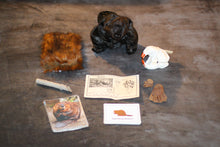
The Adaptation FIELD Kit is a unique way of educating your students about local animal and plant adaptations. Students will be intrigued every step of the way through the interactive, inquiry-based learning, and hands-on experience. This kit includes surprise puzzles of an animal or plant that will be followed by questions and a "show and tell" of animal or plant artifacts (biofacts). To end your day, indoor and outdoor activities will be provided to continue your students learning and inspire a connection to nature.
Adaptations kits are:
- Adaptations I - Eagle, Skunk, Beaver, Snake
- Adaptations II - Bee, Wild Rose, Deer, Bat
Adaptations kit includes:
- The rental is for your school
- as many teachers at your school may use this kit within the rented week(s) time
- A lesson plan (including topics on living and non-living, needs to survive, habitats, and animal and plant adaptations)
- Felt animal and plant adaptation puzzles
- Biofacts (such as skulls, plant material, and tracks) for an eagle, deer, bat, skunk, bee, wild rose, snake, and beaver.
- Including North America's First People's meanings and the importance of an eagle, beaver, and deer. Additionally, aligns with First Peoples Principals of Learning.
- Indoor and outdoor optional activities (includes magnifying glasses to take outside and explore)
Check out this five-minute video to learn more about the Adaptations kit:
https://youtu.be/4U0_33W7_70
Cost to rent:
The rental cost for one week is $100
Plus:
Refundable deposit $200
Shipping $100+ (depending on where you are located)
Pick up and drop off within Calgary - Free
*Price is subject to change
Testimonial
We were able to use the Adaptations kit for one afternoon. As soon as the natural animal artifacts were displayed, my K/1 class was fully engaged! Kenzie has spared no expense to collect the most relevant hands-on resources to complement this kit. The thinking and observations the students shared while looking at and touching the artifacts were so much more insightful, focused and enthusiastic - and then they wanted to see what other goodies were in the kit!
Our class loved the field kits! Students were engaged and all of the artifacts sparked a lot of curiosity and questions! Thanks!
How do you order a FIELD Kit?
A. First, you would check out all the Kits online at fieldkits.ca and discover which kit would be best suited for your school.
B. Then email me at fieldkits@gmail.com or via the website with your name, school, desired kit and preferred amount of weeks and preferred rental dates.
C. Once these details are confirmed I will send a contract. Please read, sign and return via email.
D. I will then send an invoice via email through the process of "Square."
E. A week before you will receive an email with further instructions on how to pick up the kit and drop off.






















































